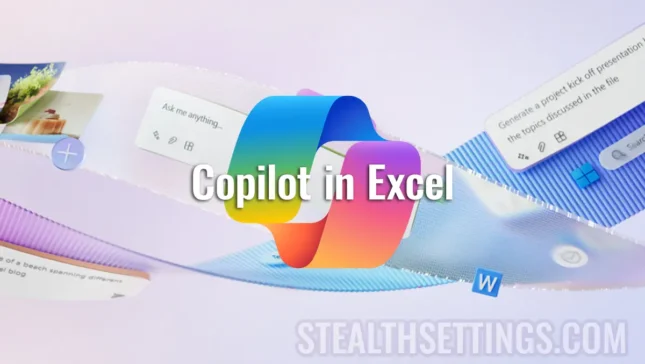Artificial intelligence has become increasingly used in many fields of activity, and to adapt to new ways to work, it is good to learn to use these new initials based on AI. In this tutorial you will see how you can use co -pilot in Excel.
content
Microsoft has invested a lot in the generative artificial intelligence, and the company did not delay in introducing this technology in its products. Thus, with a co -pilot Pro subscription, Microsoft 365 Personal or Family subscribers can create, edit or analyze documents (Word), spreadsheets and presentations with artificial intelligence.
Create a spreadsheet in Excel
Before you start, so you can use a co -pilot in Excel, in addition to the Childot Pro subscription and the Microsoft 365 Personal or Microsoft 365 Family subscription, you must have an open spreadsheet in Excel so that the Copanion Copanet button becomes active.
1. Opens a spreadsheet in Excel, in which data is entered.
2. Then select the cell or range of cells concerned.
3. Go to the option “Format as Table” from the tab “Home”.
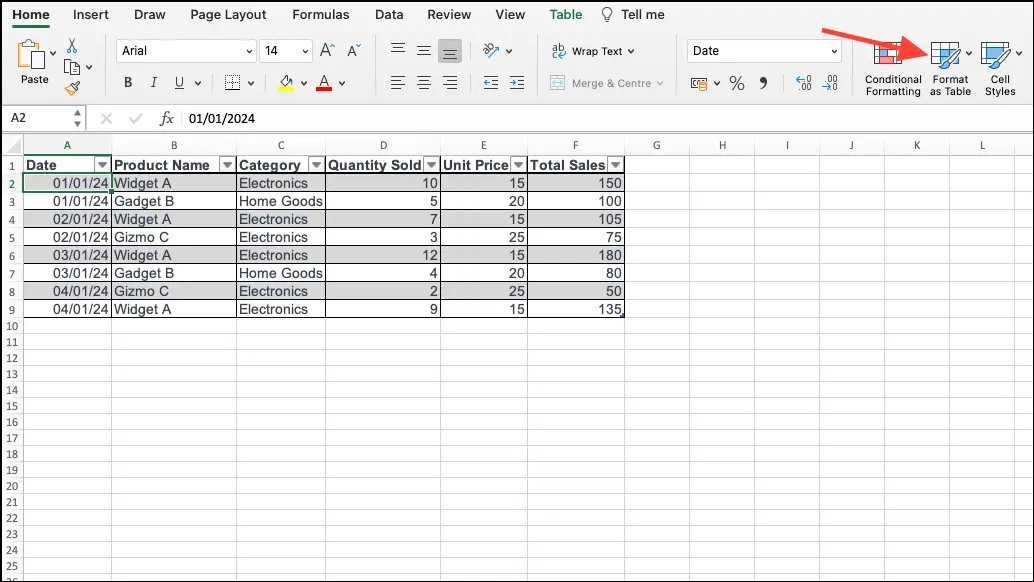
4. Select a table style.
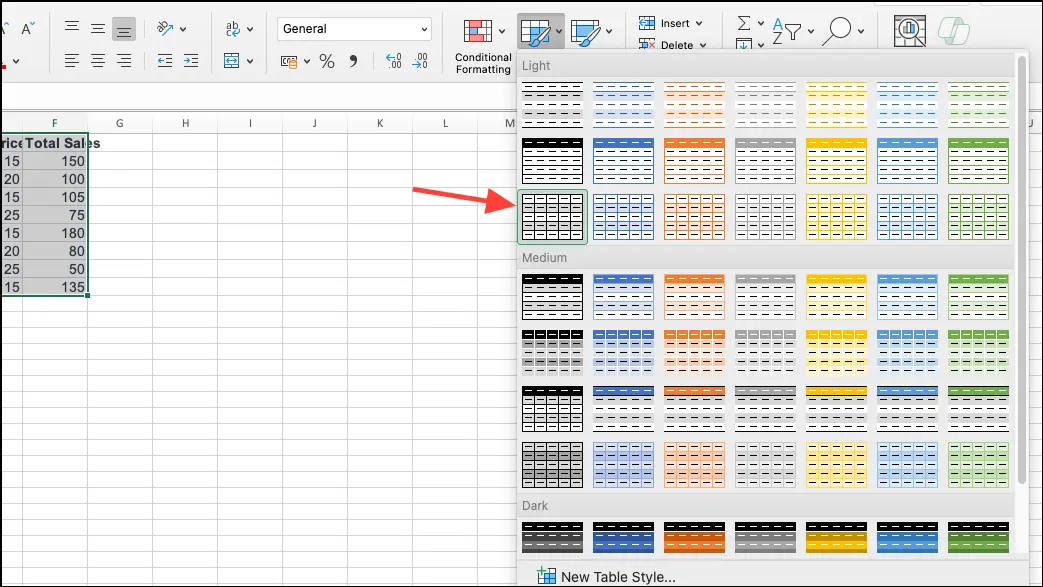
5. Check the option “My Table has headers” If you want the first line of your data to appear as a table header then press on “OK”.
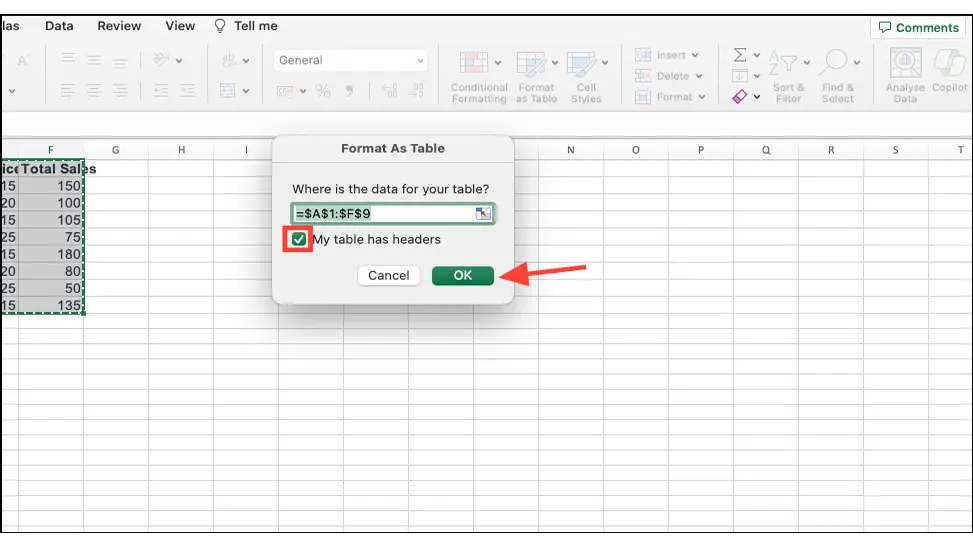
6. Now you have an Excel table at hand.
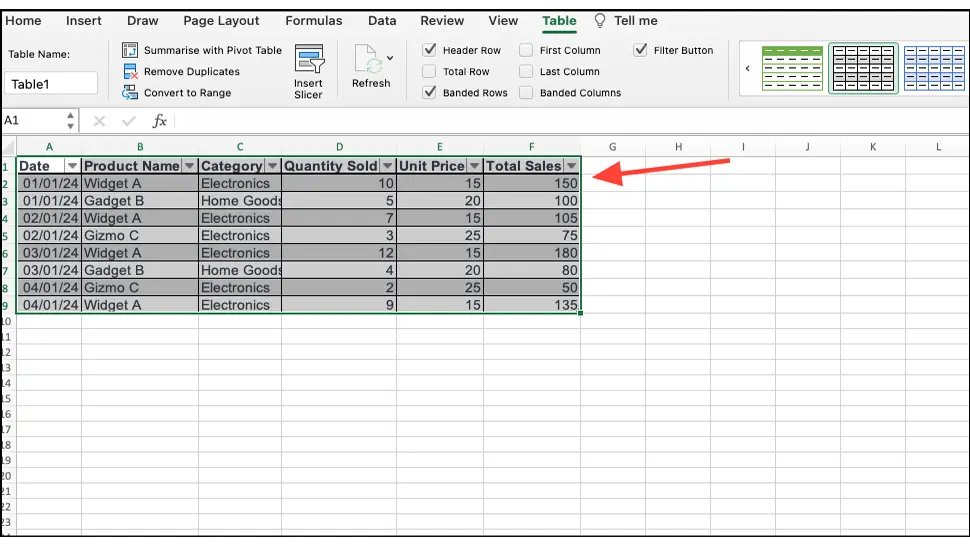
In order to be able to use a co -pilot in Excel, the spreadsheet needs to be saved in your OneDrive or Sharepoint account. Once you have saved the file in the cloud, the option can be available by which you can use co -pilot in Excel.
How can you use co -pilot in Excel for spreadsheets
Now, you can use a co -pilot in your Excel work sheet to achieve various tasks.
Co -pilot works even for Excel big tables – Tables with up to two million cells. However, at large tables, it can take a long time (more than 30 seconds) for a co -pilot to generate an answer. Options such as highlighting, sorting, filtering and suggestions for the column formulas have no limit in the table size or the amount of data.
1. Open the Excel (Worksheet) work sheet, then go to the tab “Home”.

2. Click on the button “Copilot” from the right side.
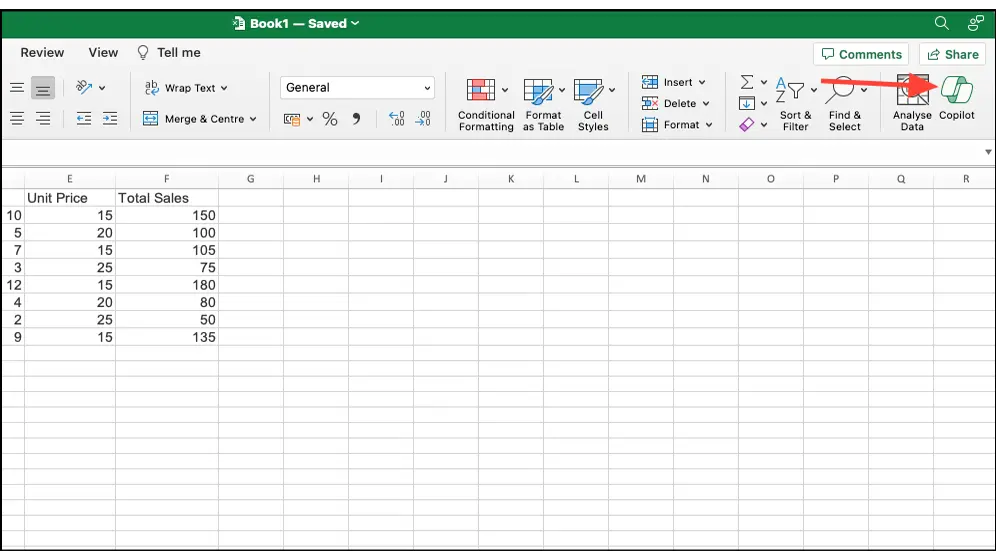
3. The co -pilot's chat panel will open on the right side. If your work file already has activated co -pilot, but you don't have an Excel table for your current data, co -pilot can convert them to you.
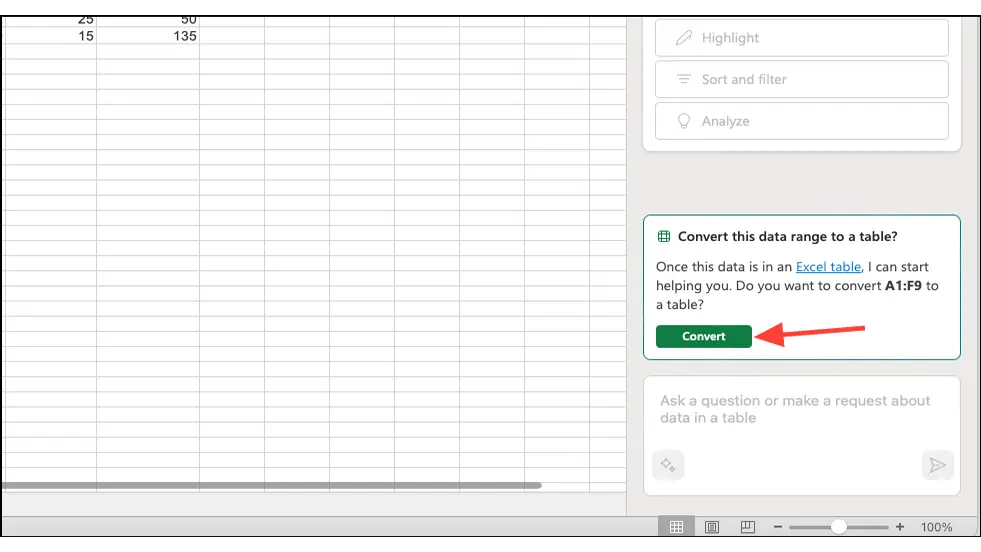
4. To interact with the table using one of the skills mentioned below, make sure you have selected a cell or data range in the Excel table.
Find InSights in Excel with co -pilot
1. From the co -pilot's chat panel, click on “Analyze”.
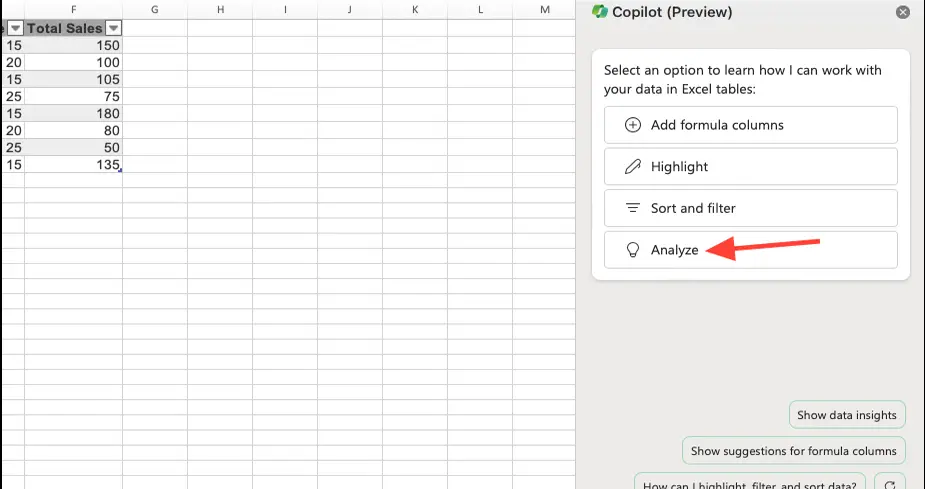
2. Copilot va analiza datele tale și va afișa unele sugestii (prompturi) pe care le poți folosi pentru a obține insights bazate pe datele tale. Click the prompt you want to use.
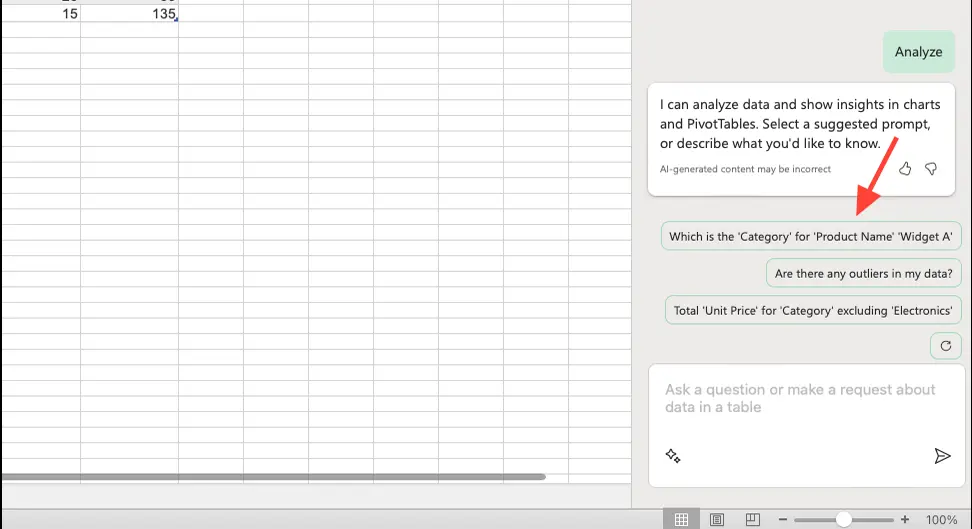
3. You can also enter your own prompt in the suggestion area if you know what insights you want to ask from the co -pilot about your data. Click the button of “Send” to send your prompt to the co-pilot.
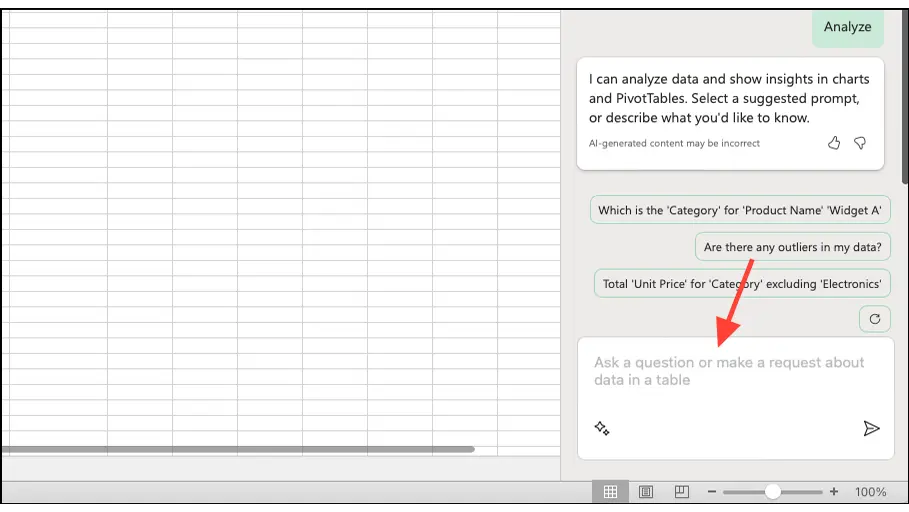
4. Churches can display insights in the form of pivottable objects, graphs, summaries, trends or outlins (values that are significantly beyond the rest of the data). Basically, co -pilot will generate in Excel what serves best to your request. To add a graph to the Excel work sheet, click the button “Add to a new sheet”.
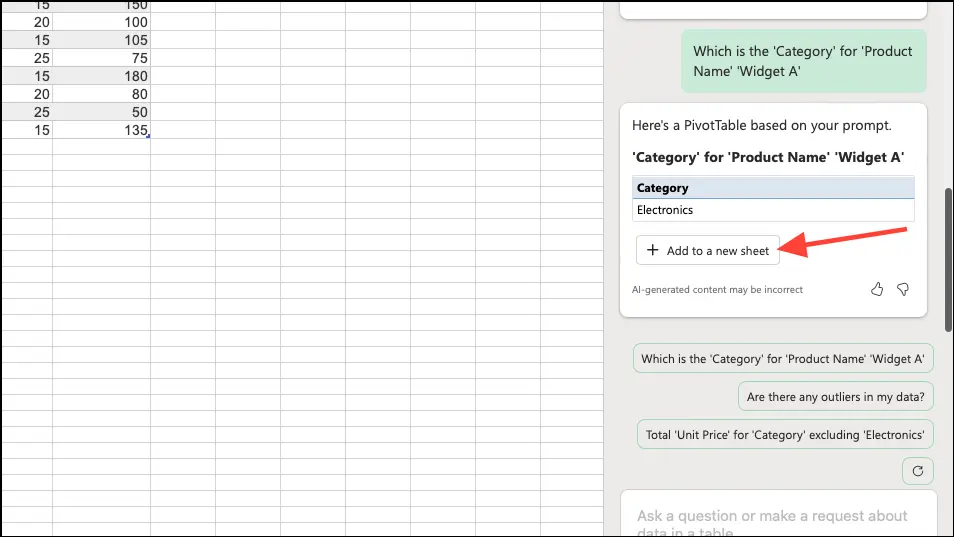
5. You can click on another suggestion to get more insights, or click the button “Refresh” to get a new set of suggestions from co -pilot.
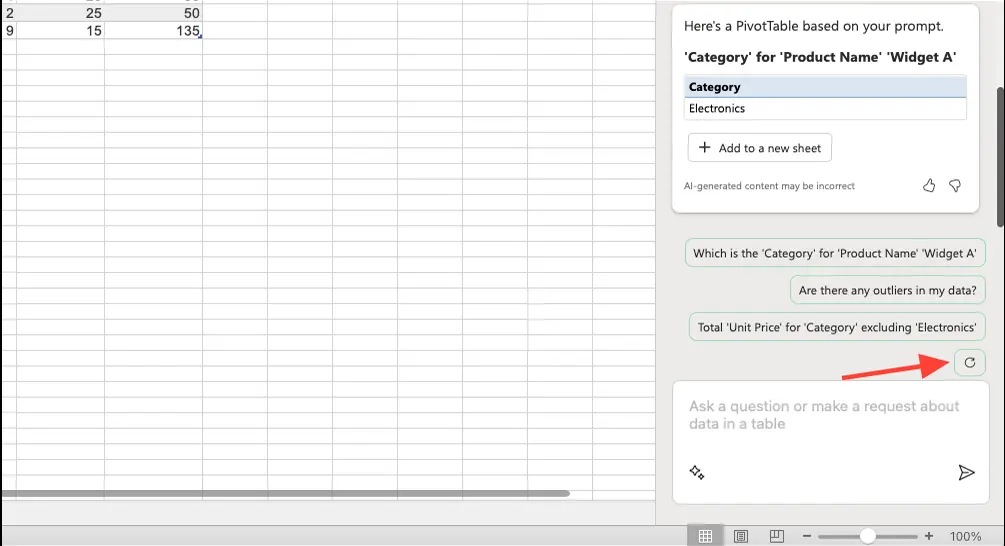
Analyze your data for various requests and examine the information that Crrătot generates to make the most of your data.
Highlight and sort your Excel data with co -pilot
Churches can easily highlight your data in accordance with simple conditional formatting rules or sort and filter Excel tables for you.
1. from the co -pilot panel, click on “Highlight” or “Sort and filter”.

2. Childhood will begin the data analysis. Once the analysis is completed, this will suggest requests that you can use for your data. Regardless of the category you choose, the suggested requests will have options for highlighting, sorting and filtering data. Click on the request (prompt) for which you want to process the data.
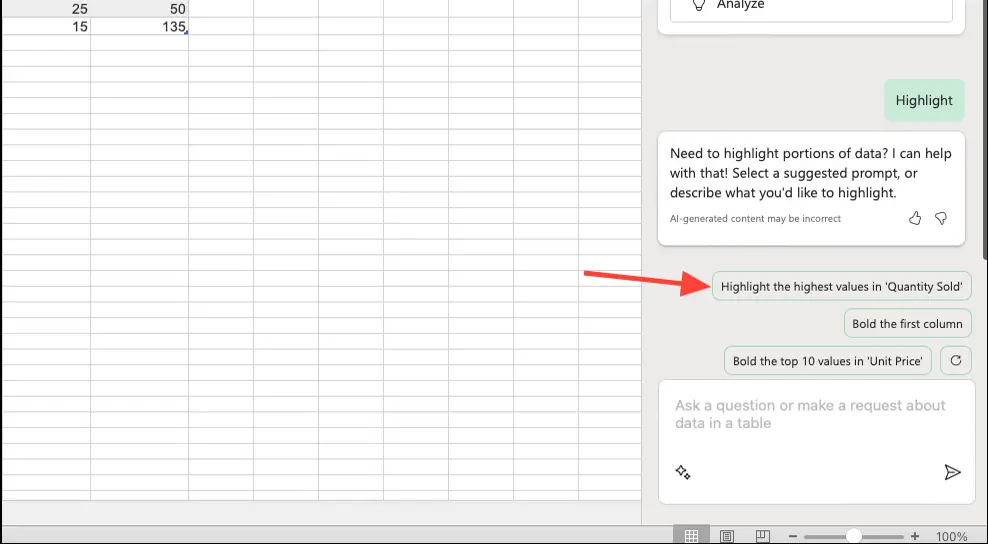
3. You can also enter your own prompt to indicate a co-pilot how you want to change the table. Depending on the prompt (request), co -pilot will make the changes in your table.
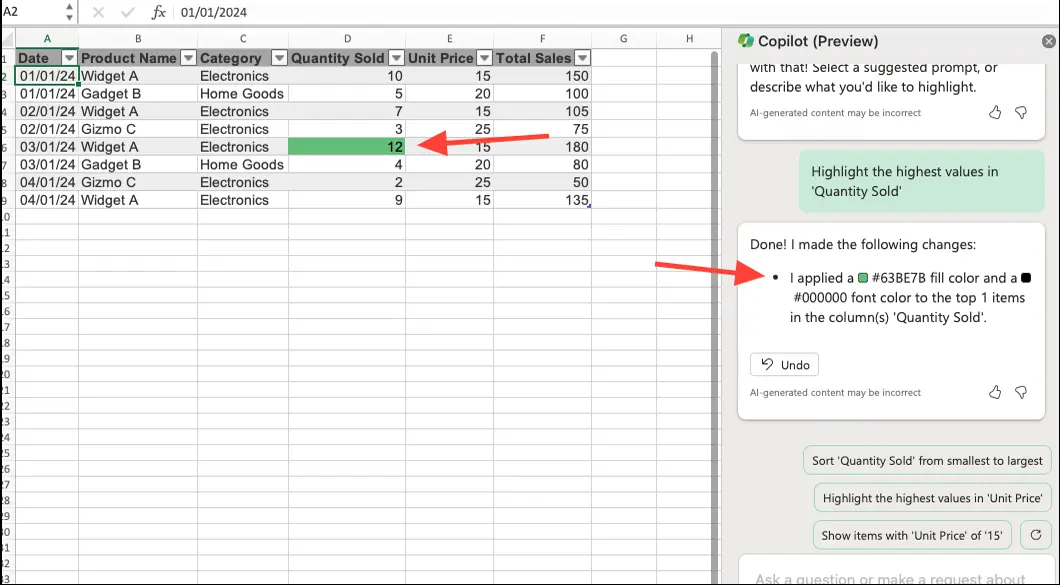
Related: Tutorials and tricks for Excel.
Generate columns with formulas in Excel with the help of co -pilot
Excel the child can also help you find formulas for a new column and add the column for you.
1. From the co -pilot chat panel, click the option “Add formula columns” (Add formula columns).
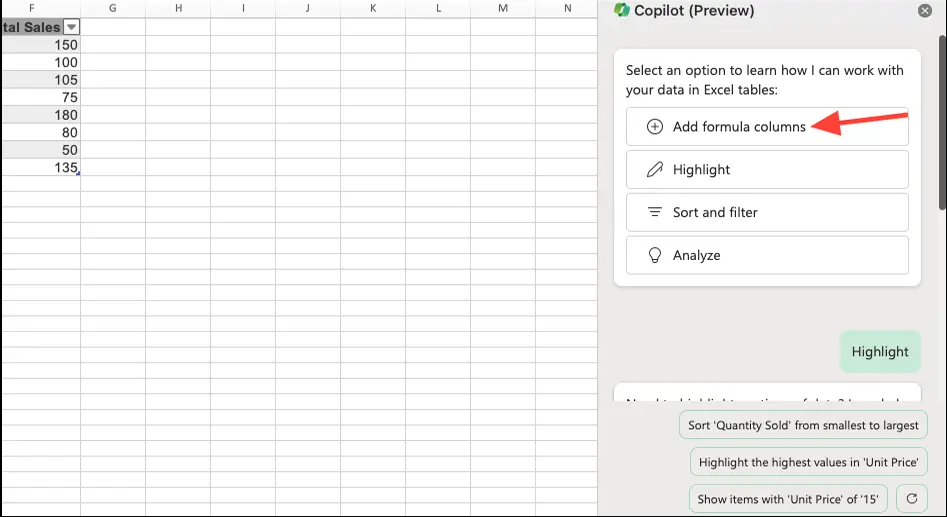
2. Childhood will come up with a few columns of formulas that you can add. Click on a suggestive prompt to use it in Excel.
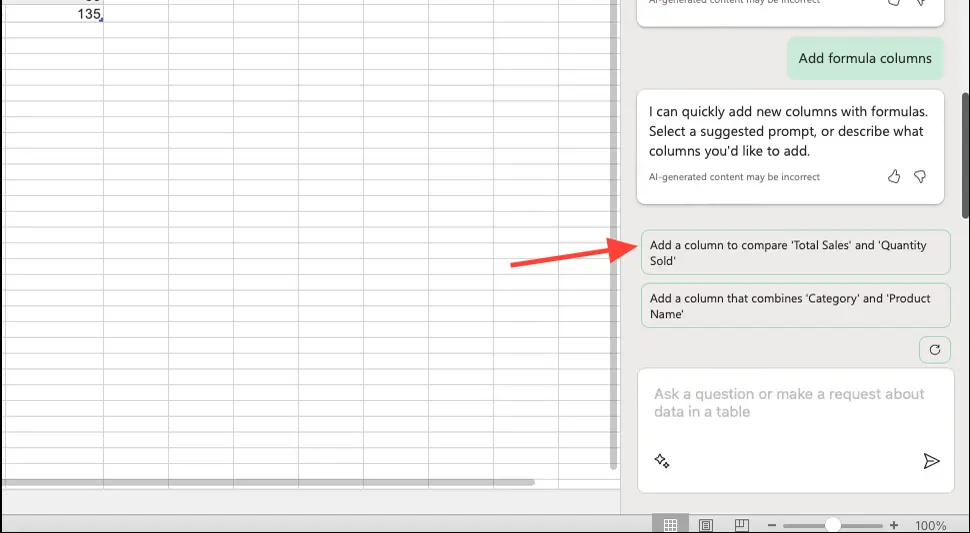
3. You can also describe in your words what column you want to add and send the prompt to the co -pilot. Artificial intelligence will then provide a formula -based formula suggestion. You can also see an explanation of how the formula works.
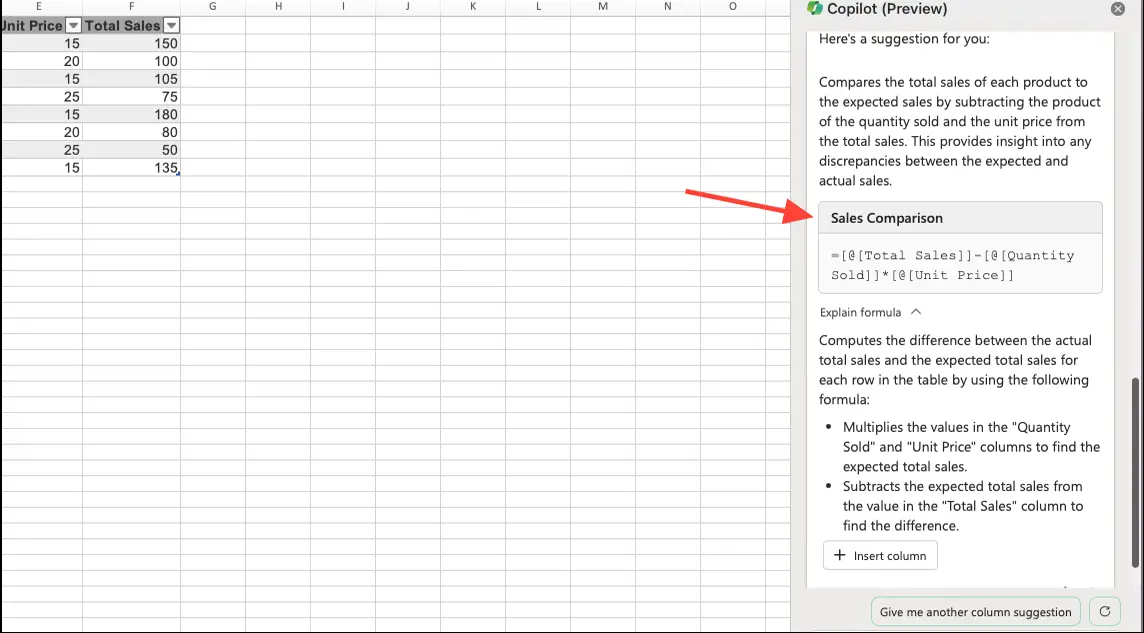
4. If you want to enter the column into your spreadsheet. Click the button “Insert Column”.
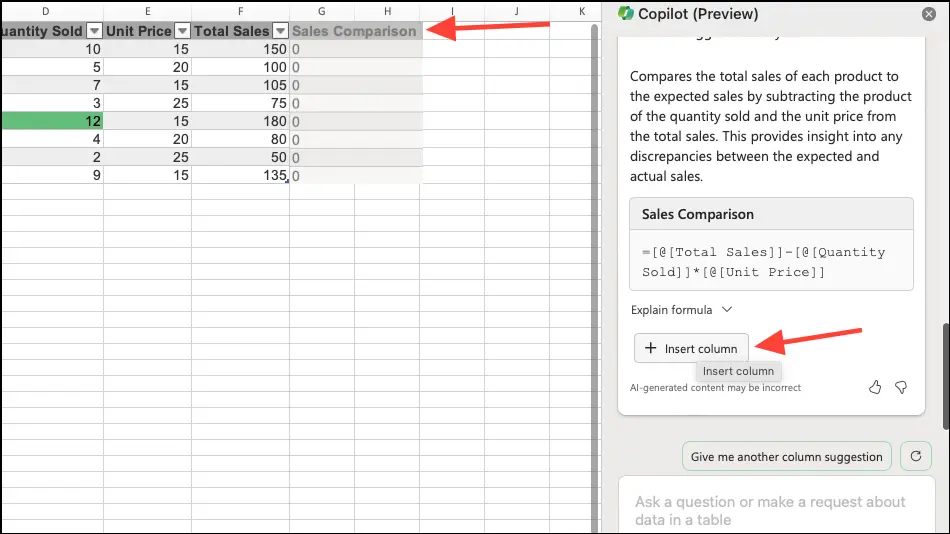
The use of co-pilot in Excel for spreadsheets offers a strong way for data analysis and obtaining information in a more efficient way. With the help of advanced technologies, such as automatic learning and natural language processing, co-pilot becomes an intelligent partner for Excel users, expanding their capabilities in data management. While still in the preview stage, Microsoft continues to improve a co-pilot based on the feedback received from users. As it develops to withstand multiple languages and data formed, co -pilot has the potential to revolutionize how people interact with the data within the Excel platform.
At the time of publishing this article, you can use a co -pilot in Excel only in English.
